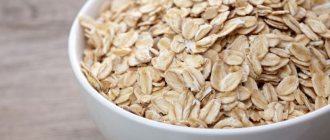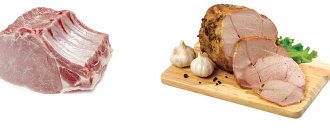The energy value of dishes is of interest not only to those losing weight, but also to those who want to stay in good physical shape. It is not surprising that the question often arises of how many calories are in granulated sugar, refined sugar and sugar substitutes, because they are components of many dishes and are added to tea and coffee.
How many calories are in granulated sugar and refined sugar?
Sugar is the carbohydrate sucrose. Since this is a refined product, it is very quickly absorbed by the body, enters the bloodstream and provides a large supply of energy. The calorie content of granulated sugar is 398 kcal per 100 g.
Many people are interested in how many calories are in a teaspoon of sugar, because... it is a teaspoon that is most often used to measure this sweet product. Since a teaspoon contains about 8 g, the calorie content of this amount of sugar is 25-30 kcal.
Some people like refined sugar in pieces. The calorie content of one cube, depending on the size, is 10-20 kcal.
Fans of a healthy lifestyle often choose brown sugar, which is unrefined cane sugar. And of course they want to know how many calories are in brown sugar. This product is slightly less calorie than beet sugar, it contains 378 kcal. In addition, unrefined cane sugar contains more various vitamins, micro- and macroelements, which increases the usefulness of this product.
How many calories are in sugar substitute?
There are a lot of sugar substitutes, some of them are natural, the rest are synthetic. Natural substitutes are sorbitol, xylitol and fructose. Their calorie content is slightly lower than that of regular sugar:
- in sorbitol – 354 kcal per 100 g;
- in xylitol – 367 kcal per 100 g;
- in fructose – 375 kcal per 100 g.
Among the natural sweeteners we can mention stevia, an extract from the leaves of the plant of the same name. Stevia has zero calories, it is considered one of the healthiest sweeteners and is approved for diabetics.
The most common synthetic sweeteners are acesulfame, cyclamate, and saccharin. These substances, when they hit the receptors of the tongue, cause the same nerve impulse as when a sweet product hits. The calorie content of sweeteners is zero, they are not absorbed and are completely eliminated from the body, but, according to many doctors, synthetic sweeteners are harmful.
“Eating sugar is harmful” - this postulate has become firmly entrenched in the consciousness of many people since childhood. However, this product is invariably present in every home. Therefore, the question of what the calorie content of sugar is in a given volume is quite natural. This is especially true for people who watch their weight.
Sugar – friend or foe?
Sugar or sucrose is a valuable nutrient .
In the digestive tract, sucrose is broken down into fructose and glucose and almost immediately enters the blood. It is glucose that is the main energy material in the body, thanks to it our muscles work continuously. When an excess level of sugar occurs in a person’s blood, the mode of transformation of sugar into fat is activated, so the body creates a “safety cushion” for itself just in case.
This is how a slender sweet tooth turns into a luxurious, curvy lady, and if this scenario is not for you, remember the calorie content of sugar and consume it in moderation, without harm to your body.
The benefits of sugar
It is important to understand that granulated sugar is a pure carbohydrate that quickly saturates the human body with energy, but contains scanty amounts of vitamins and minerals.
When entering the body, sugar is broken down by gastric juice into fructose and glucose. It is in this form that it enters the blood. After this, insulin produced by the pancreas regulates the concentration of sugar in the blood and delivers sugar breakdown products into cells.
Interesting: Calorie content of funchose per 100 grams
Perhaps the only advantage of sugar is the production of glucose during its breakdown, which is the main source of nutrients entering the brain. The sugar glucose is also used by the liver to form phenol-eliminating acids.
Calorie content of foods with sugar
Using simple mathematical operations, you can calculate the daily amount of sugar that will not harm a person. For women this is 6 teaspoons , for men - 9 , the calorie content of 1 piece of refined sugar is 10 kcal, respectively, women can afford 12 cubes, and men - 18. It should also be noted that in addition to the sugar that is put in coffee or tea , sugar is found in large quantities in confectionery products, baked goods, and sweet drinks.
What dishes to cook with sugar for weight loss? None! No one treats an alcoholic with vodka, or treats sugar addiction with sugar. To change yourself, you need to change your habits and your lifestyle, without such a sacrifice you will not see weight loss results.
If you have already regained your slim figure, do not rush to pounce on sweets, remember, the fat cell is not destroyed, it has given up its reserve, but at the first opportunity it will begin to recover. That is why those who have lost weight often gain excess weight again, and even more than before.
Calorie content of cane sugar
Cane sugar is brown in color and has a lower calorie content than regular sugar. 100 g of product contains 385 kcal. It also has a lower glycemic index: 55 instead of 65 units. But this is provided that you bought a natural product and not a fake.
Photo source: shutterstock.com
The BZHU indicators are as follows:
- proteins - 0.21 g;
- fats - 0.04 g;
- carbohydrates - 97.61 gr.
At the same time, cane sugar has a rich composition of useful elements. Among them are B vitamins, calcium, potassium, magnesium, and sodium compounds.
Calorie content of a piece
Sometimes you can see cubed cane sugar on store shelves. So, 1 pc. on average weighs 4 grams, but there are pieces weighing 5 grams. Accordingly, the calorie content of a piece of cane sugar varies from 15.4 to 19.25 kcal.
Choosing the lesser evil
In some situations it is impossible to give up eating sweets, so it is worth learning as much as possible about the calorie content of sweet foods. Pay attention to the composition of the product indicated on the packaging and its calorie content. Compare protein, carbohydrate, vitamin and mineral content. Give preference to products that contain at least something useful in addition to carbohydrates.
White sugar itself is a refined product, maximally purified from foreign impurities, so the content of substances other than carbohydrates is practically zero.
Nutritional table
| 387 kcal | 80-90 kcal | 17 kcal | |
| Brown sugar | 377 kcal | 80-85 kcal | 16-17 kcal |
| Coconut sugar | 375 kcal | 80-85 kcal | 16-17 kcal |
| Rafinated sugar | 10 kcal | ||
| Vanilla sugar | 380 kcal | 80-85 kcal | 16-17 kcal |
| Substance content in white sugar | 100g | Daily value, % |
| Carbohydrates | 99.98 g | 20-30 |
| water | 0.02 g | |
| Vitamin B2 | 0.019 mg | |
| Calcium | 1.0 mg | |
| Iron | 0.01 mg | |
| Potassium | 2.0 mg |
Brown sugar is made from sugar cane. Cane sugar differs from white sugar in having less calories and a slightly higher content of nutrients, because it is not refined (purified).
Dietary nutrition involves counting calories and it matters how many calories are in sugar, depending on its type. When losing weight, this product is usually excluded from the diet, like confectionery.
Sweet food additive
Most people have the habit of putting 1-2 spoons of sugar in their tea or coffee. At the same time, they do not think at all about how many calories they consume. A morning cup of hot drink or a snack at work with something “tasty” seems harmless to them. But later they wonder where the extra pounds on the hips and waist or high blood sugar come from.
We have lost the habit of considering drinking tea as something safe for our health, and we stubbornly refuse to notice the sugar dissolved in boiling water. At the same time, sweet lovers are the first candidates for obesity and diabetes. Do not forget that people consume sugar not only in its pure form, but also in many food products:
- fruit;
- vegetables;
- bread, pastries;
- conservation, etc.
The fructose and sucrose they contain must also be taken into account when planning your daily diet. When creating a menu, you need to know not only the calorie content of individual products, but also how many calories are in sugar.
Glycemic index of sugar
The glycemic index refers to the rate of absorption and increase in blood sugar levels after consuming a product. The maximum glycemic index level is 100 for high-carbohydrate foods. Their consumption disrupts metabolic processes and leads to fat deposits. The minimum level is 0 for carbohydrate-free, fiber-rich foods that take a long time to be absorbed by the body and this process requires energy.
The glycemic index of sugar, white or brown, is 70, which is significantly lower than that of bread, potatoes, rice, pumpkin and watermelon.
Which sugar is healthier?
Sugar can come in different shapes and colors depending on the technology used to extract it. There is no fundamental difference in the beneficial properties of refined sugar, crystalline powder or powdered sugar. These three varieties are simply different forms of the same product. There are only differences in the optimal storage conditions for each of them. The level of sucrose in these products reaches 99.75% due to the high level of beet purification, the remaining 0.25% is all that remains for useful microelements. All nutritionists and doctors are unanimous in the opinion that sugar is not a healthy product and its only advantage is pure sweetness without background tastes and odors.
Is brown sugar healthy?
It is necessary to understand that it is not just the color and shape of a certain type of sugar that plays a role, but whether the original product has been chemically processed. The modern food industry can easily give a dark color and a pleasant aroma to highly processed sugar from cheap sugar beets or sugar cane residues - it's just a matter of marketing.
On the other hand, natural coconut sugar, which has a lower glycemic index, can be bleached through gentle processes - as a result, it will look like regular refined sugar and contain the same number of calories per teaspoon, while at the same time having a fundamentally different mechanism of action on metabolism a specific person.
Are sweeteners harmful?
In conclusion, we note that sugar creates addiction not so much at the hormonal level as at the level of taste. Essentially, a person gets used to eating sweet sugar and is constantly looking for this taste. However, any natural source of sweets is, in one form or another, high-calorie fast carbohydrates, which lead to weight gain and an increase in body fat mass.
Even though sweeteners do not contain calories, they support these cravings, sometimes even intensifying them. It is better to use sweeteners as a temporary measure and as a tool for quitting sugar, but not as a magic product that allows you to eat large doses of something sweet, but without calories. In the end, deceiving your body can be costly.
Despite the same calorie content in different types of sugar, the mechanism of their action on the body is different. The reason lies both in the glycemic index and in the presence or absence of chemical processes to which a particular type of sugar has undergone during the production process. In most cases, natural sugar is healthier than synthetic sugar, even with the same calorie content.
- Glycemic Index Chart Comparison of 23 Sweeteners, source
- Glycemic Index for Sweeteners, source
- Sugar and Glycemic Index – Different Sweeteners Compared, source
How many calories are in a spoonful of sugar?
If eating without sugar is not possible, then it would not hurt to know the energy value in addition to its uselessness and glycemic index. Many nutritionists argue that it is not sugar itself that is harmful, but its excessive consumption in conditions of insufficient physical activity.
The table shows average data for white and brown sugar in the form of sand.
| Spoon | Brown | White |
| Dining room | From 80 without a slide to 86 with a slide | From 82 without a slide to 90 with a slide |
| Tea room with slide | From 18 without a slide to 26 with a slide | From 20 without a slide to 28 with a slide |
Brown sugar
No matter how paradoxical it may sound, in the context of the development of the modern food industry, brown sugar can be real, that is, unrefined, and fake, that is, tinted refined.
In the first case, sugar has beneficial properties due to the small but still present amount of molasses in it. It contains phosphorus, iron, potassium, calcium and sodium. In fact, it is an intermediate product at the stage of extracting white sugar.
Until recently, brown sugar was used primarily for the production of alcoholic beverages and some food products. But in recent decades, supporters of a healthy diet have begun to use it in their daily home menu. Experts say that its calorie content is identical to the calorie content of white sugar, but consuming brown sugar, in addition to energy, provides the body with useful microelements.
White sugar tinted with molasses is sometimes mistaken for brown sugar. But it is never written “unrefined” on it, so it is easy to recognize. Its calorie content is approximately the same as that of white and brown. In terms of composition, this product is slightly better than the white type and an order of magnitude worse than the natural brown one.
Sweeteners
Sweeteners are of synthetic and natural origin. The former do not carry any energy value and are not absorbed by the body at all. At the same time, there are studies that prove they are harmful to the body. The latter can have different calorie content, their main feature is that they take a long time to digest, thereby not provoking a rapid jump in insulin in the blood after consumption. The exception is stevia and powder, being sweeteners of natural origin, they are absolutely non-caloric and are not absorbed by the body. Almost all sweeteners are much sweeter than sugar and are used in smaller doses.
There are a lot of artificial sugar substitutes, their range is increasing every day. The composition and dosage can be read on the product label. Most often they come in the form of tablets and are conveniently packaged. Most popular:
- Sucralose is extracted from regular sugar and is considered the safest of all alternative sweeteners. Its glycemic level is 0, it does not affect the level of insulin in the blood, it is 600 times sweeter than sugar and has no calories.
- Aspartame is 160-200 times sweeter than sugar, energy value is 40 calories per 100 grams, it is not recommended for use in cooking when long-term heat treatment is used.
- Saccharin is approximately 400 times sweeter than sugar and contains 20 calories per 100 grams of product. Several decades ago, there was a popular theory about the dangers of this product, which was refuted by progressive research.
Natural sweeteners are also available in a wide range, the main ones being:
- Fructose is a product extracted from fruits. It is 2 times sweeter than sugar, the glycemic index is 20, 100 grams of the product contains 35 calories, which is almost the same as sugar, but since less is needed, this affects the energy value of dishes or drinks.
- Sorbitol is extracted mainly from rowan berries, apples and apricots. Sugar is 2 times sweeter, but being an alcohol in its structure, it does not affect insulin in the blood. Calorie content 100 grams - 24 calories.
- Erythritol - extracted from melons. Low in calories, does not affect insulin levels in the blood, less sweet than sugar. To replace 10 grams of sugar, you need 7 grams of erythritol.
- Stevia - obtained from the leaves of the stevia plant. 200 times sweeter than sugar, contains no calories. It has a specific bitter-copper taste. Whole stevia leaves are also used in drinks.
Can sweeteners be used?
Knowing how many calories are in a teaspoon of sugar and other measures of volume, many sweet tooths give up “white poison” and switch to sweeteners. Is it really safe?
Modern industry offers many options for replacing treats:
- saccharin;
- aspartame;
- sucralose and others.
The most popular are saccharin and aspartame. They do not increase blood glucose levels and do not harm tooth enamel. The big advantage of these chemicals is that they contain no calories at all.
However, sweeteners act insidiously and gradually destroy the body. As they decompose, they release toxins and carcinogens that can lead to cancer. A characteristic indicator of harmful effects is a metallic taste in the mouth.
Sucralose is considered the least dangerous. If you ask how many calories are in a spoonful of substitute sugar, nutritionists will answer: the energy value is zero. At the same time, the lack of calories is compensated by other, rather suspicious, properties of the artificial additive. So it is better to consume regular sugar, but in minimal quantities.
Can the body exist without sugar?
Nutritionists and medical professionals are unanimous in their opinion that refined or brown sugar is not something healthy or necessary for the human body. But its excessive use, which occurs in literally every second case, has serious consequences and entails malfunctions of all systems. At the same time, a person needs natural sugars, which are found in natural products. Therefore, fruits, dried fruits and berries should be included in every person’s diet.
Interesting video:
How many calories are in 1 (one) spoon, piece, (one) cube of sugar? “We all remember when artificial sugar substitutes appeared in our reality. There was no limit to the happiness of losing weight and sick people - because now you can combine business with pleasure. Diet cola is simply heaven, because now it shouldn’t cause as much harm as regular cola (minus seventy-five calories). If you replace all portions of sugar with miracle tablets throughout the day, you will end up with ten tablets a day instead of ten spoons of sugar, isn’t this a miracle? In total, this is minus two hundred calories to your daily diet.
Daily sugar intake
If you regularly eat a lot of sugar, this can cause excess weight, weakening of the body's defenses, the appearance of caries, the development of diabetes and even malignant tumors. To prevent negative consequences, you need to know your daily sugar intake and not go beyond it.
WHO recommends consuming no more than 25-35 grams of sugar per day , which equals approximately 5 teaspoons. And in post-Soviet countries, according to statistics, a person on average eats 120 grams of sugar per day!
Photo source: shutterstock.com
When understanding the question of how much sugar you can eat without harming your health, it is important to consider the level of sugar content in various foods. For example, 100 grams of marshmallows contain 14.5 teaspoons of sugar, which is almost 3 times the daily requirement!
It is also important to remember that sometimes a lot of sugar is contained in foods that, it would seem, should not contain it at all. Such products include sausage, ketchup, bread, semi-finished products, etc.
Once you reduce your sugar intake, positive changes will follow. Your weight will normalize, your skin condition will improve, your concentration will increase, and your risk of cardiovascular and other diseases will decrease. You can learn more about the benefits and harms of sugar from the video:
How many calories are in 1 spoon of sugar?
In 1 (one) teaspoon without a slide - 20, with a slide - 28 kcal.
In 2 (two) spoons - count it yourself... (hint: multiply the previous readings by 2).
There is an average of 28-34 kcal in 1 (one) tablespoon.
In 2 (two) spoons - count it yourself... (hint: multiply the previous readings by 2).
One (1) gram of sugar contains an average of 4 kcal.
Calorie content of coffee and sugar
Calculations are given for 100 grams of coffee drink.
With sugar - 50 kcal. per 100 ml. drink
With sugar and milk - an average of 60 kcal.
With milk without sugar (depending on the fat content of the milk) - an average of 35 kcal.
Without sugar - 2 kcal. for 100 ml coffee.
Calories in coconut sugar
Coconut sugar is a new product for the Russian market, which is produced from the sap of coconut palms. Its calorie content is slightly lower than that of regular white and cane sugar, and is 376 kcal per 100 grams.
Photo source: shutterstock.com
The glycemic index of coconut sugar is 45 units. But the BZHU is represented by the following figures:
- proteins - 1.1 g;
- fats - 0.5 g;
- carbohydrates - 94 gr.
One of the most valuable components of this product is inulin, which has prebiotic properties, that is, it stimulates the growth of beneficial microflora and improves intestinal function.
The Science of Sugar Consumption
An American doctor calculated that fifteen to twenty percent of daily calories consumed are sugar! However, you don’t necessarily always eat it in its pure form. It is quite an integral component of canned fruits.
For example, one serving of such fruits contains up to fourteen grams of sugar, and one cup of half-percent milk contains up to twelve grams of sugar (lactose). Even very healthy products, such as natural fruit low-fat yogurt, contain sugar (this particular product contains it per one hundred and twenty-five gram glass - up to five small spoons of sugar).
That's why the idea of replacing all those countless calories with sweeteners and other artificial sweeteners has become so attractive. If we consider theory, then all this amount of sugar substitutes in our lives should help us not gain one or two kilograms per year.
Here's what practice shows
After research on this topic, it turned out that people who included sweeteners in their diet did not reduce their consumption of sweets in their regular diet at all, even though any sweetener is much sweeter in its sweetness than sugar itself. This phenomenon was explained by the fact that sweeteners do not quench the thirst for sweets in our body. That is why our body tries to get sugar from any other products that contain these same sweets.
The point is that the tongue can be deceived, but the stomach cannot be deceived. However, the danger is that in addition to sugar with other additional products, we also eat additional fats, proteins and carbohydrates.
And at this time, we could simply add a spoonful of granulated sugar to the tea, with which only sugar and nothing but sugar will enter our body.









